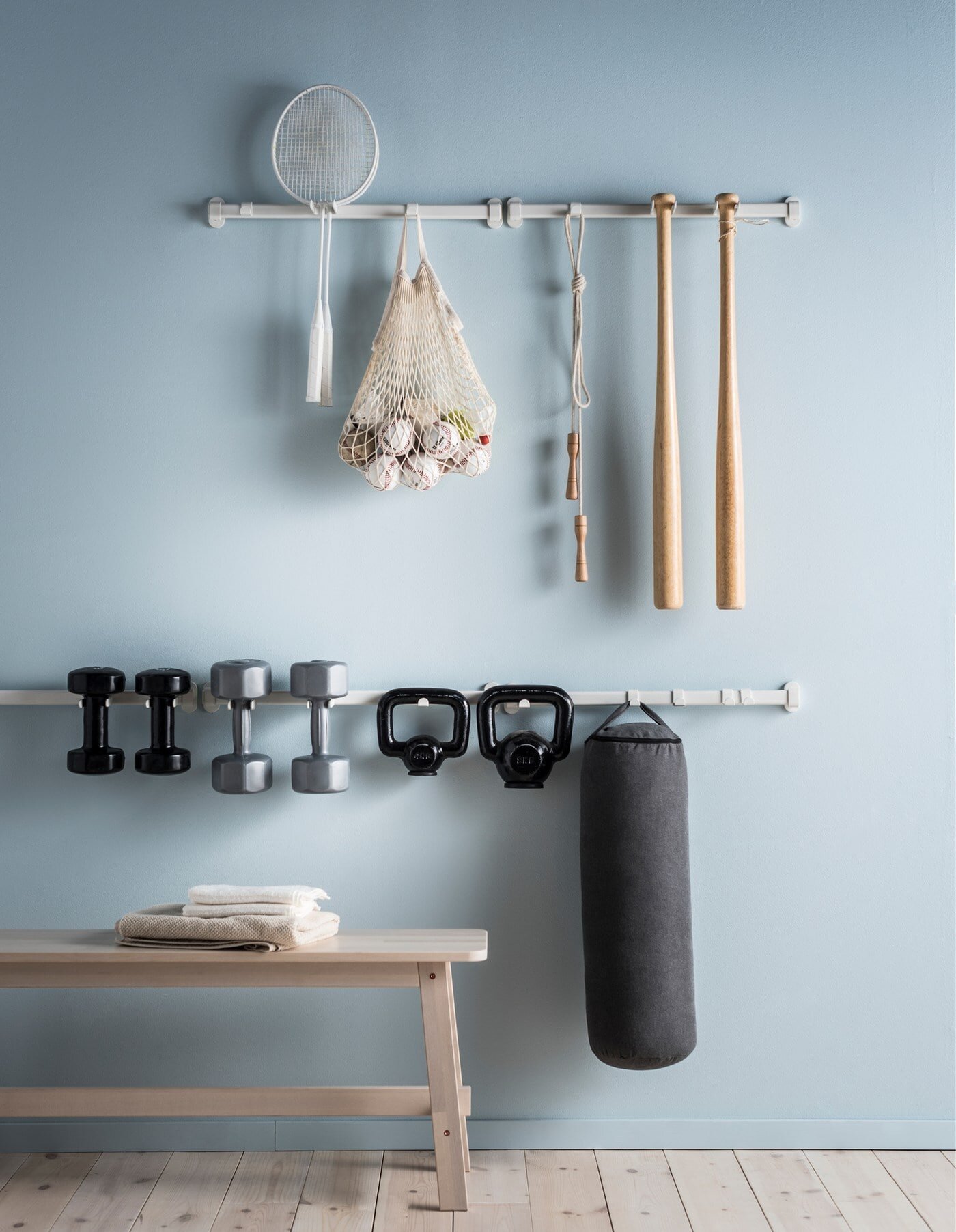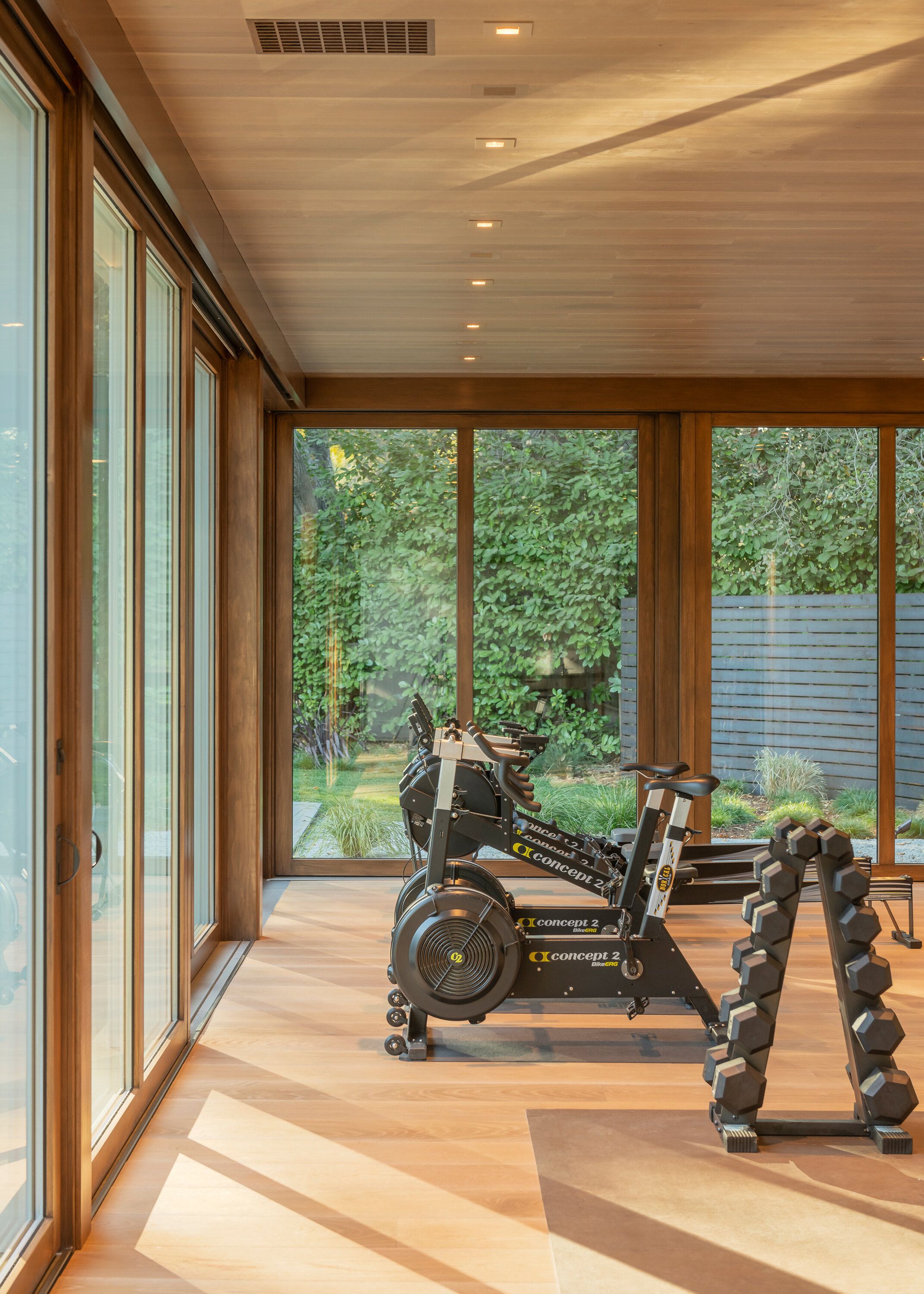Designing for the Perfect Home Gym
Since this past year’s pandemic lockdowns forced gym and wellness studios to close their doors, the home gym has once again become a much-coveted feature of modern living. While people have resorted to at-home workout regimens, we’re seeing the undeniable benefits of owning a well-designed home gym - flexibility in workout schedule, no commute, privacy, less distraction, less germs (!), and most importantly- personal customization. With home gyms increasing in popularity, designing for wellness has become more of a focus for designers and architects.
IKEA
Even before the pandemic, popularity of compact equipment pieces such as Peloton bikes and Mirror systems allowed for such flexibility and were growing in popularity. Other high-style tools keeping us motivated are the Alo Essential Yoga Set , Carrara Marble Kettlebell, & Lululemon’s Double rollers.
Peloton Bike
Mirror
TheRMKlab Design Kettlebell
There’s no doubt a thoughtfully designed home gym can foster increased productivity, balance, health, and pleasure. Jim Westover, partner-principal at William Duff Architects, shares some valuable input on the home gym trend.
William Duff Architects, Photography by Patrik Argast
1. What amenities and new requests have you heard from your clients? (as it relates to COVID-19 Living)
“No more shared home offices. Either private offices or flexible spaces that can easily be converted to zoom rooms with some acoustic privacy. It used to be conventional wisdom that home gyms didn’t get a lot of use, which is not the case any more. We just completed a home gym on the peninsula and are seeing them more on clients’ wish lists.”
Blackband Design, Newport Coast
2. What are the main components of a well-rounded fitness room?
“Good ventilation for fresh air, enough room for equipment and ideally windows or french doors with a nice connection to the outdoors. And if we know the specific equipment to be used, we can plan for that and make sure everything fits with enough room for circulation.”
3. How does the architecture influence a home gym experience? (window views, floor plan layout, lighting, etc.)
“Some home gyms end up being the leftover space in the basement. But with some good planning and creativity, the home gym can have a nice layout, good lighting, a flat screen TV, music and plenty of windows for natural ventilation, light and views. All those things make it a nice space to be in, which means you’ll use the gym more and be healthier.”
Lynda Murray Design
4. How do you integrate technology? Sounds systems?
“We integrate AV just like we would in a family room or home theater. We may have a flat screen TV for video and ceiling speakers for good sound. Depending on the project, we may work with an AV Consultant who’s familiar with the latest technology.”
5. What elements and amenities can you introduce to create an environment that doesn't feel utilitarian?
“If it’s going to be a space that people want to spend time in, it needs to have nice warm materials that can also hold up well in a gym environment. The most recent home gym we completed had a wood floor with mats under the heavy gym equipment. There was also a nice spa-like restroom with a steam shower and a little kitchenette with water, towels and snacks.”
Donny Deutsch Townhouse
6. Do you consult with a wellness professional at any point during the project?
“We have not. Our most recent home gym client is an experienced triathlete, so he knew exactly what kind of equipment he wanted. But, for a client who is not quite as savvy we would consider a consultant.”








